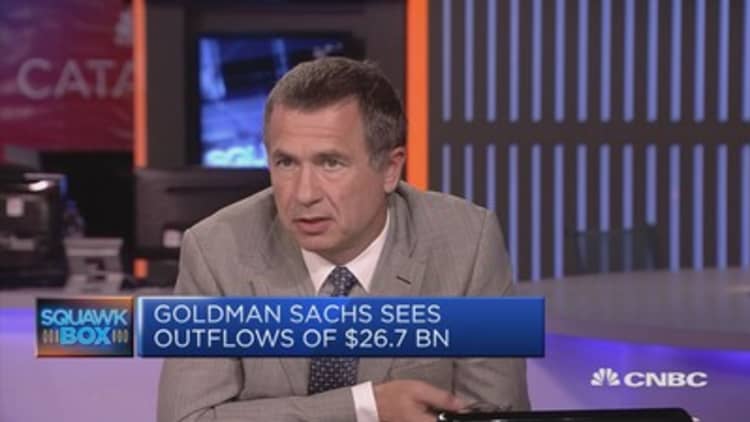Passive investment strategies have grown in popularity among investors, but they present a "frightening" risk to the markets, warns a Morgan Stanley strategist.
The flow of investment from active management funds to passive investment funds is significant; it increased to nearly $500 billion in the first half of 2017, according to Bloomberg data. Morningstar data revealed investors have pulled an estimated $26.7 billion from Goldman Sachs Asset Management's mutual funds so far this year, the Financial Times reported on Sunday.
Hans Redeker, global head of foreign exchange strategy at Morgan Stanley, is worried by this flow of cash.
"I do not like what I see, because you have to consider when you have people getting more involved with passive investment strategies, the market will be less able to react to minor distortions or minor declines on the fundamentals side. You will not see the market direction. You will see just a continued inflow of funds," he told CNBC's Squawk Box on Monday.
The appeal of passive funds is they generally charge lower fees than active managed funds, which boosts investors' returns. But while this helps individual investors, it is problem for the wider market.
"From an aggregate point of view it is frightening. It means that at one point you will not have the active end in the market to stabilize it. You would have just the passive guys getting into herd mentality," he warned.

Redeker said that investors into passive funds can choose risk strategies allowing them to sell out completely if their investment drops by a certain amount, and this can cause a cascade effect, where small market moves are amplified if passive funds automatically sell off assets.
"What is then going to happen if the equity market is going to hit those (sell) levels on the downside? You can have a cascading effect," he said.
"For the passive investment situation, the passive investor needs to get out, simply because he has hit his 5 percent limit, or 10 percent limit. So this cascading risk needs to be looked at."
Redeker compared this to active managed funds, where the active manager can assess the market and decide if there is a buying opportunity. This can help to stabilize the market when it turns negative.
However, using a passive fund does not rule out using an active fund as well. Laith Khalaf, senior analyst at Hargreaves Lansdown, says clients at his firm use both strategies, showing they are pragmatic and not dogmatic.
"Some passive funds have cut costs significantly, but there are still some more expensive trackers out there so investors still need to do their homework," he told CNBC via email.
Passive and active funds also suit different markets, according to Khalaf. Passive funds work well where it is difficult to outperform the market, such as U.S. large caps, while active funds better serve sectors such as U.K. smaller companies.
"Overall we anticipate the funds market will gradually polarise to low cost passive funds at one end of the spectrum and high performance active funds at the other," Khalaf said.
"The middle ground, inhabited by expensive passive funds and mediocre active funds will become increasingly squeezed."


